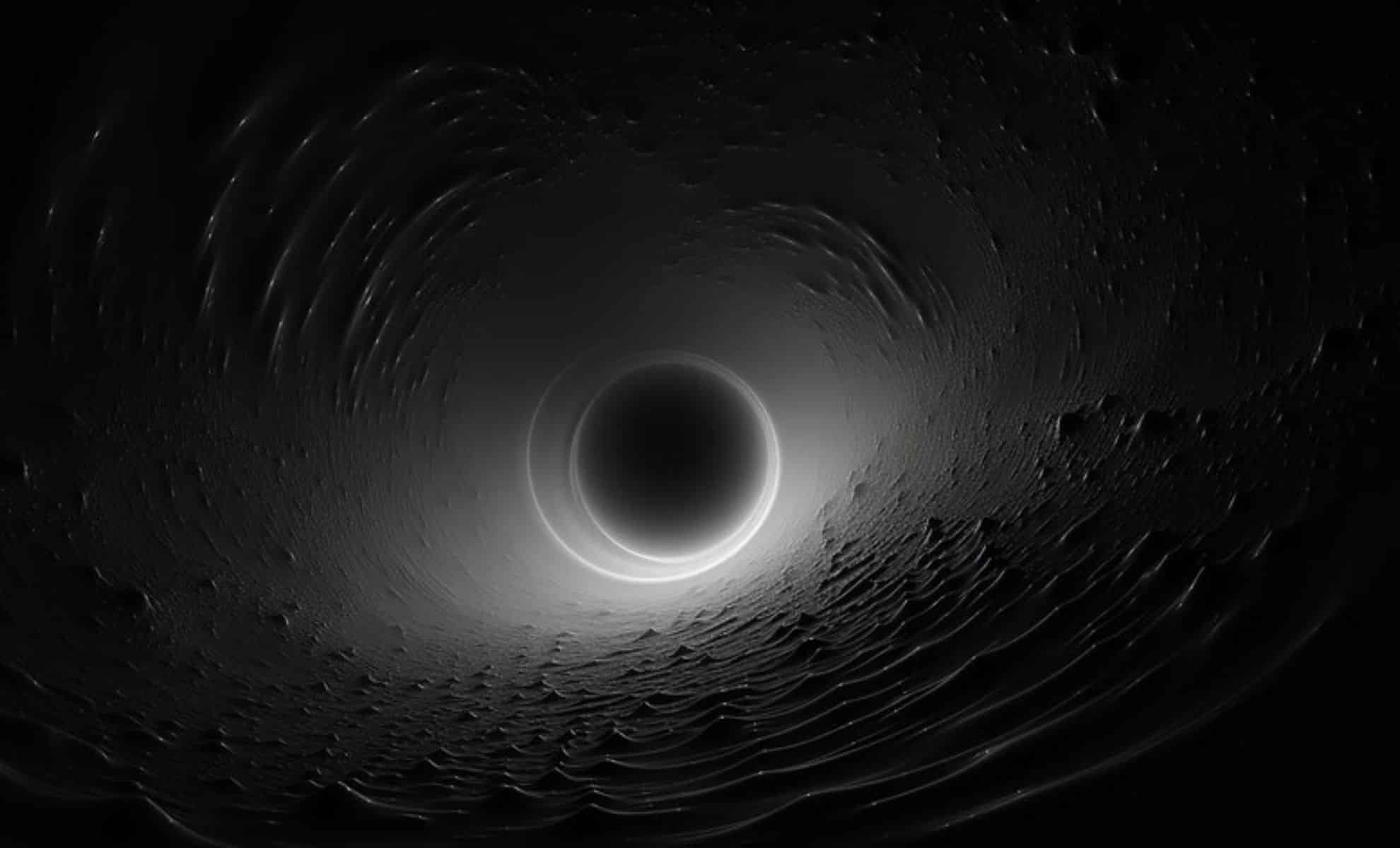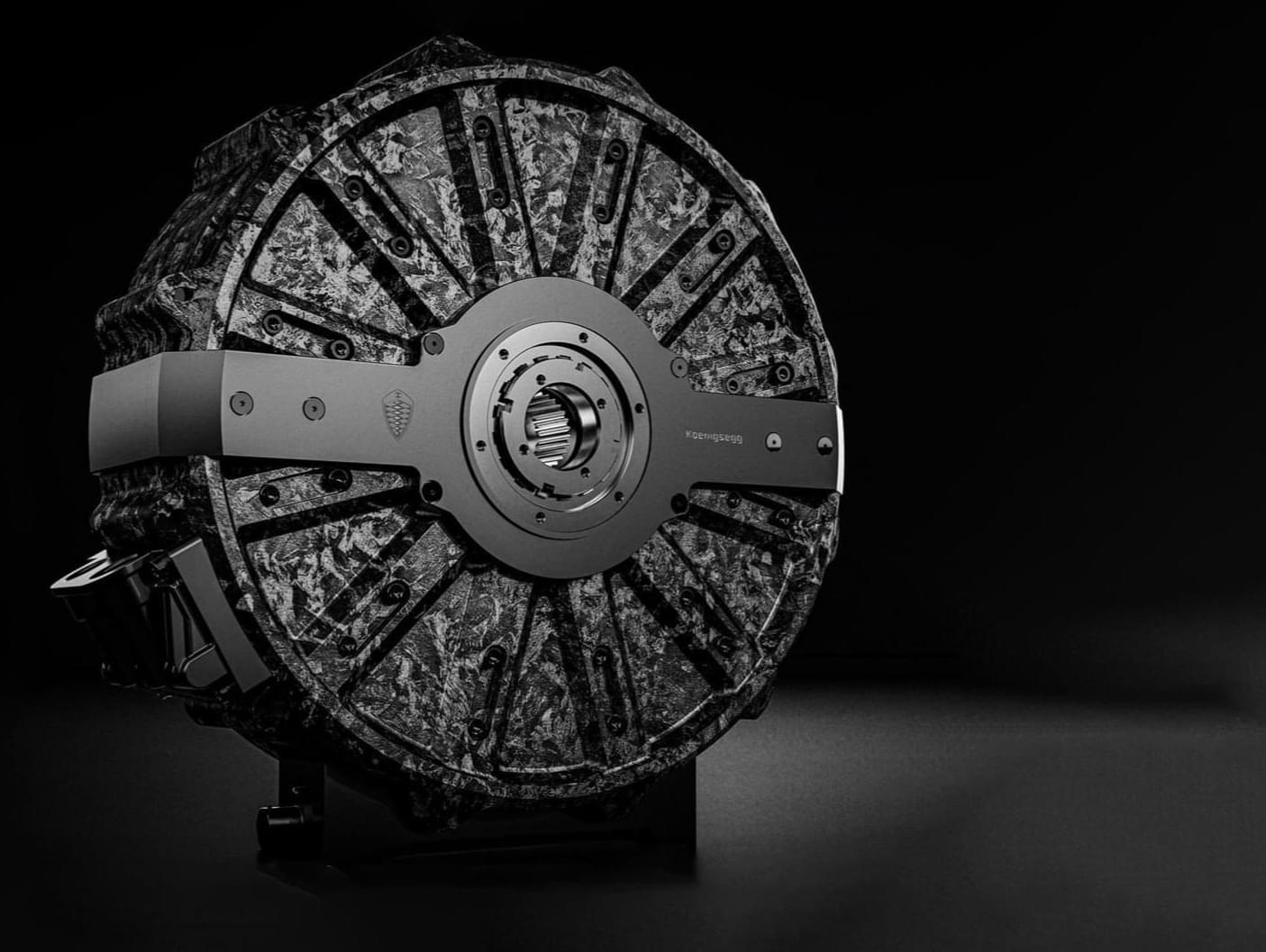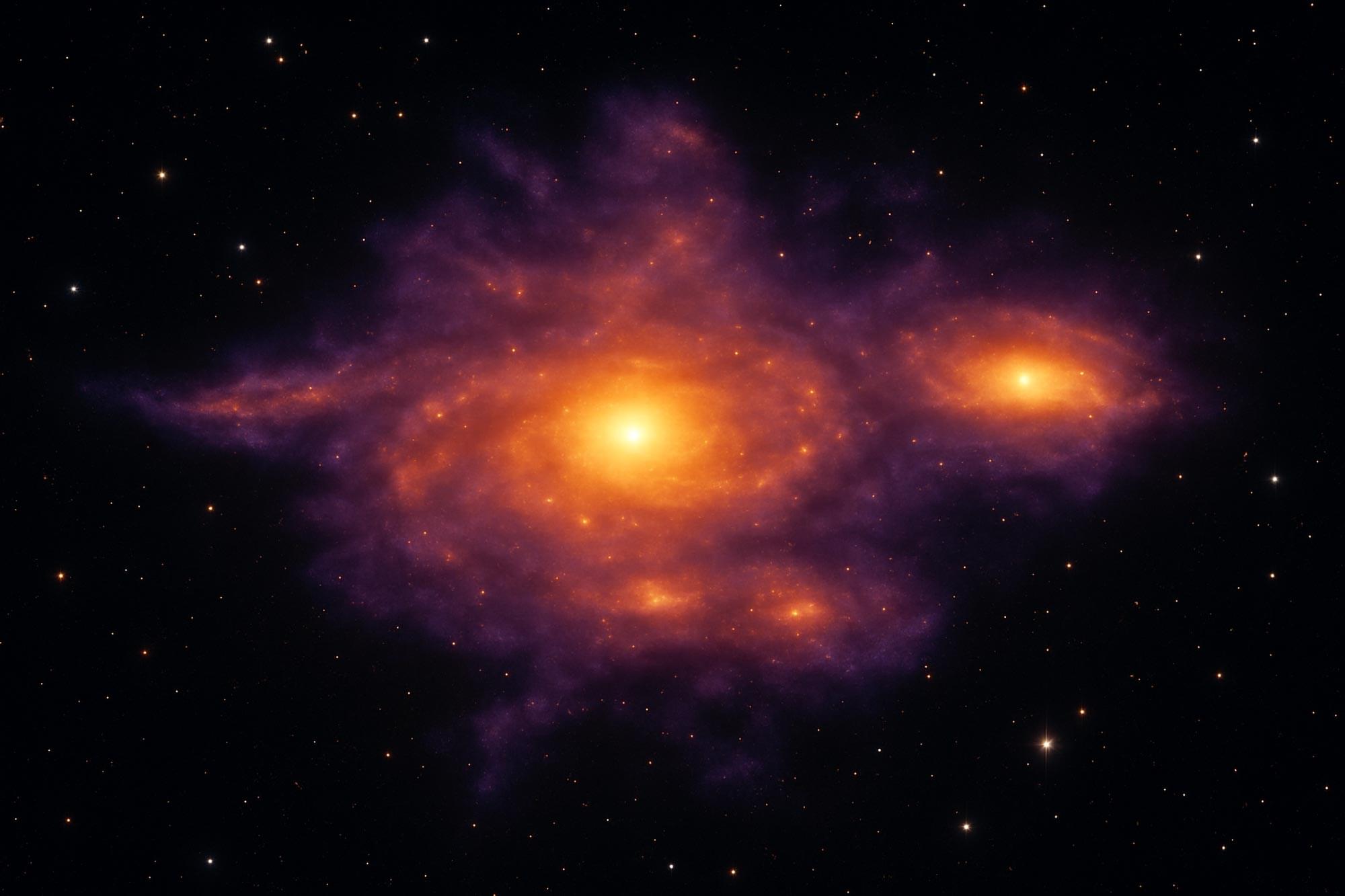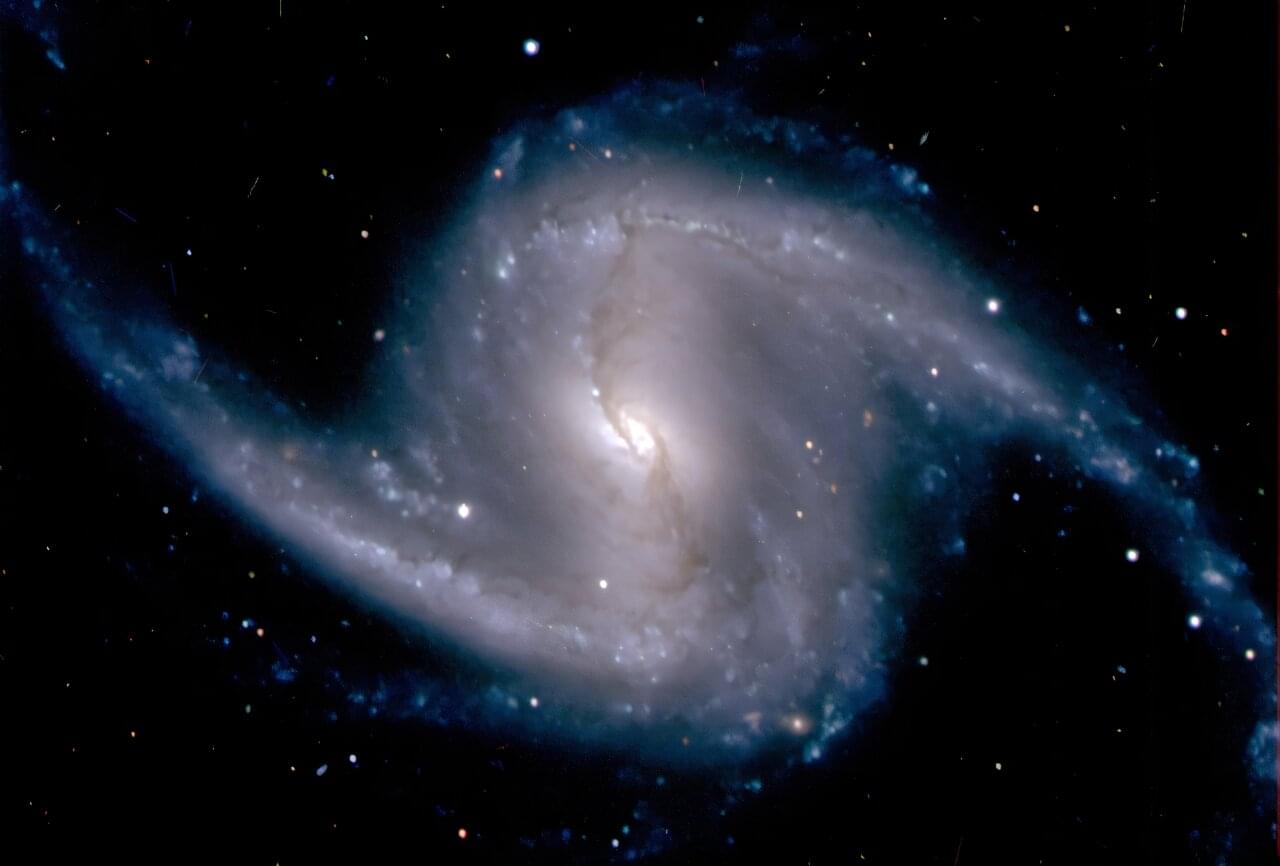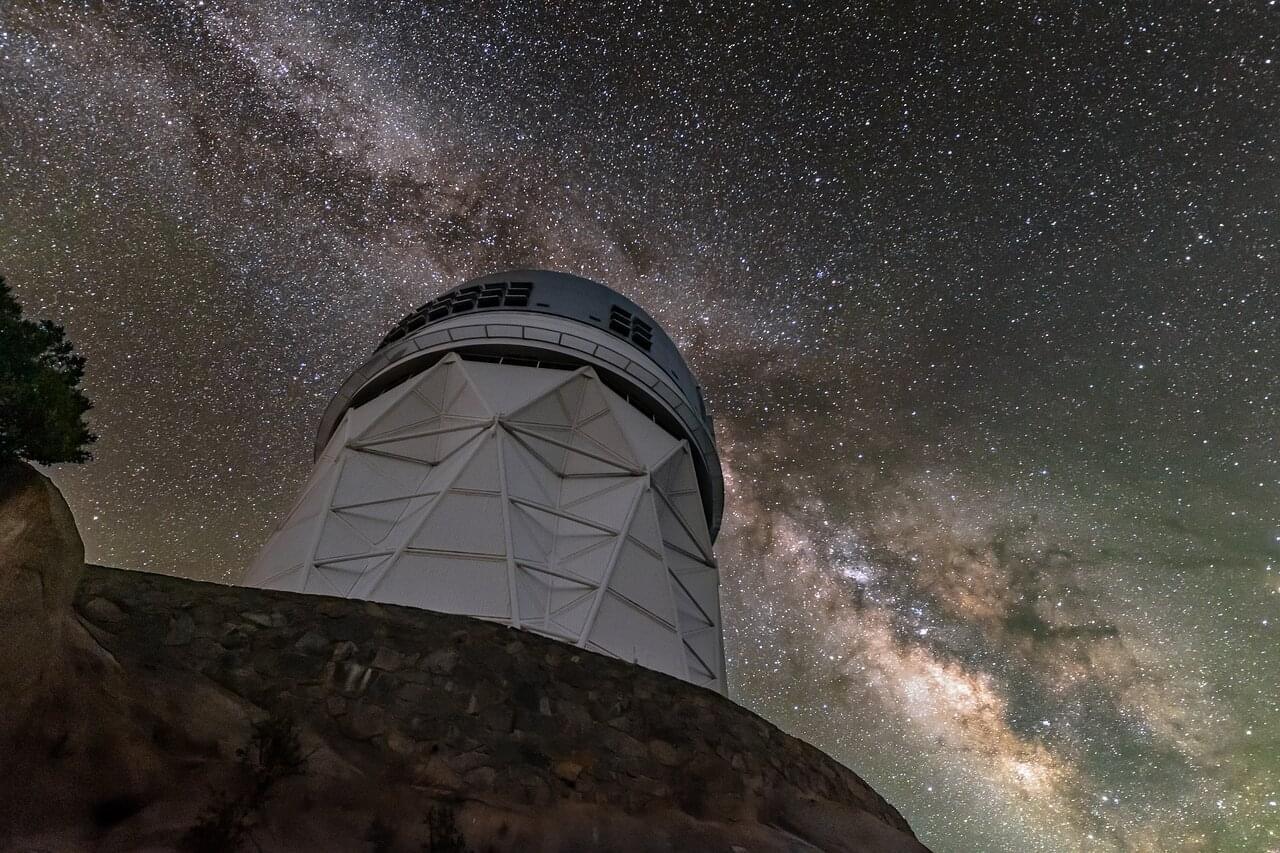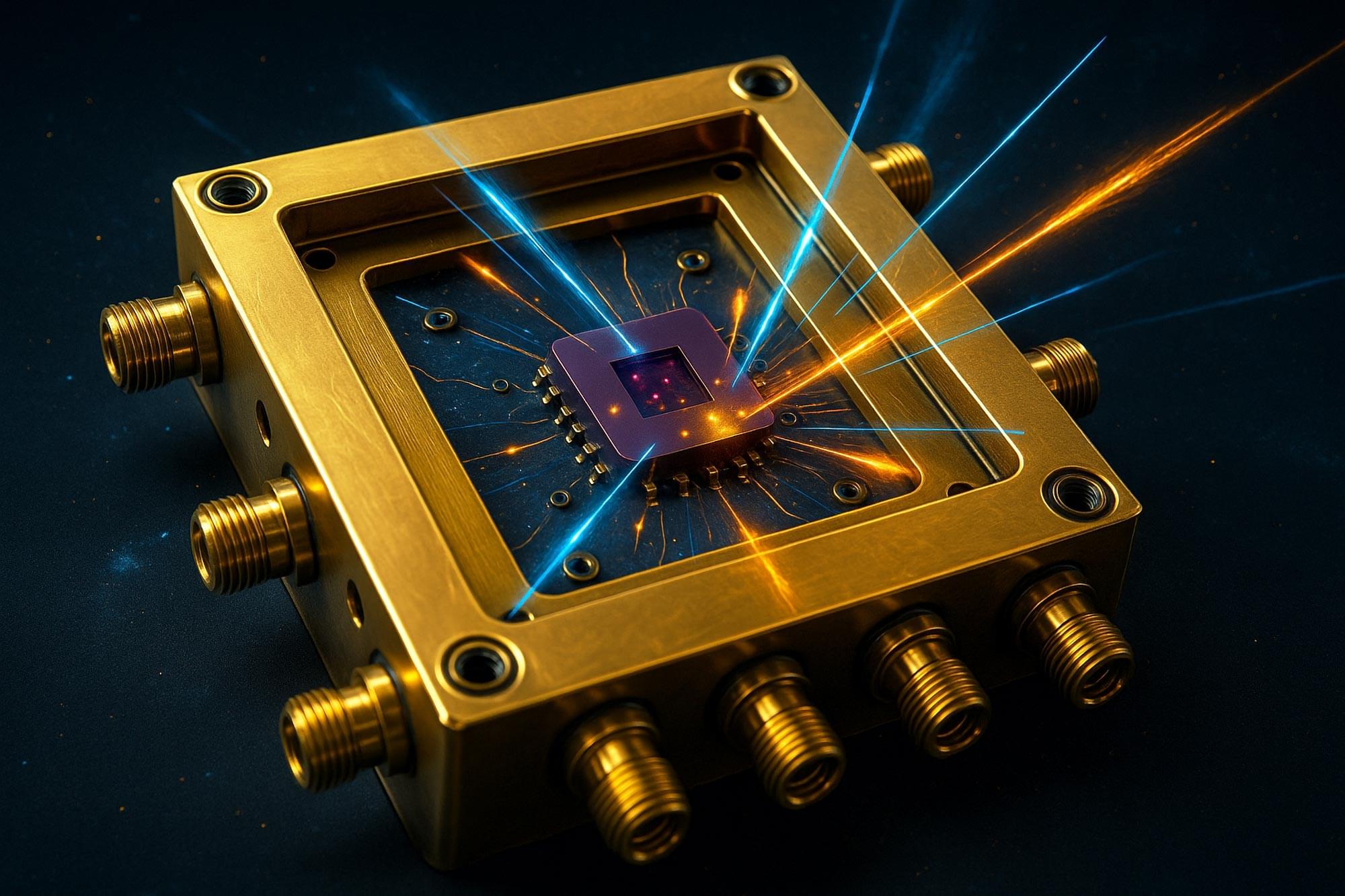Researchers have turned NASA’s Parker Solar Probe into a dark-matter detector, taking advantage of its close encounters with the Sun to search for dark-photon signals.
Dark matter is an elusive but consequential substance. It accounts for 27% of the total energy content of the Universe and plays a crucial role in the formation of cosmic structures, acting as the skeleton for the “cosmic web” of galaxies [1]. However, its nongravitational interactions with known particles remain a mystery. Among the many types of dark-matter particles that have been proposed, a compelling candidate is the ultralight dark photon [2]. Just as the photon mediates the electromagnetic force between electrically charged particles, the dark photon would mediate interactions between a hypothetical set of dark particles. Researchers have previously looked for dark photons using lab-based particle detectors and Earth-bound telescopes. But now Haipeng An from Tsinghua University in China and his colleagues have utilized a unique vantage point next to the Sun to search for a dark-photon signal [3].

